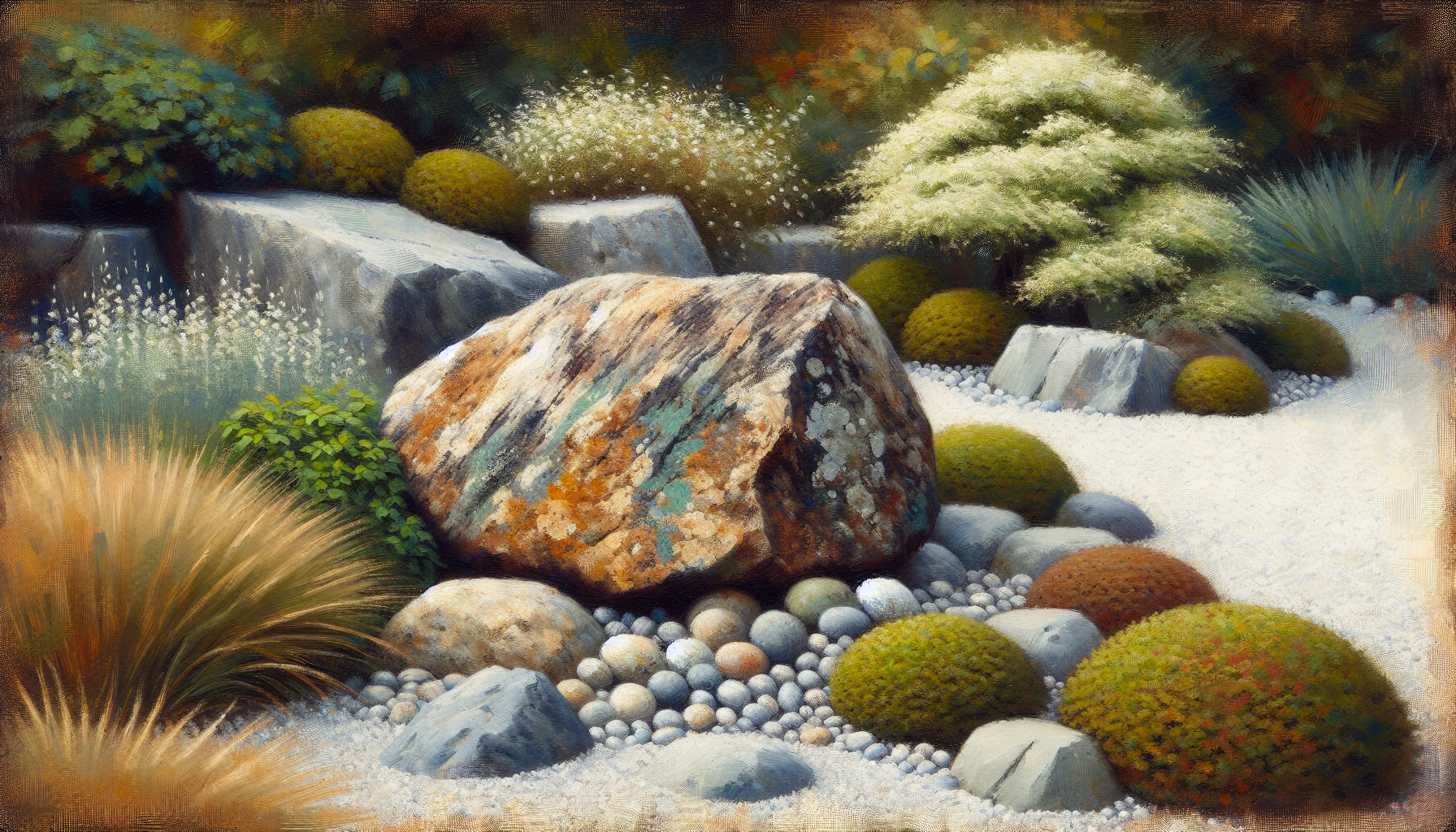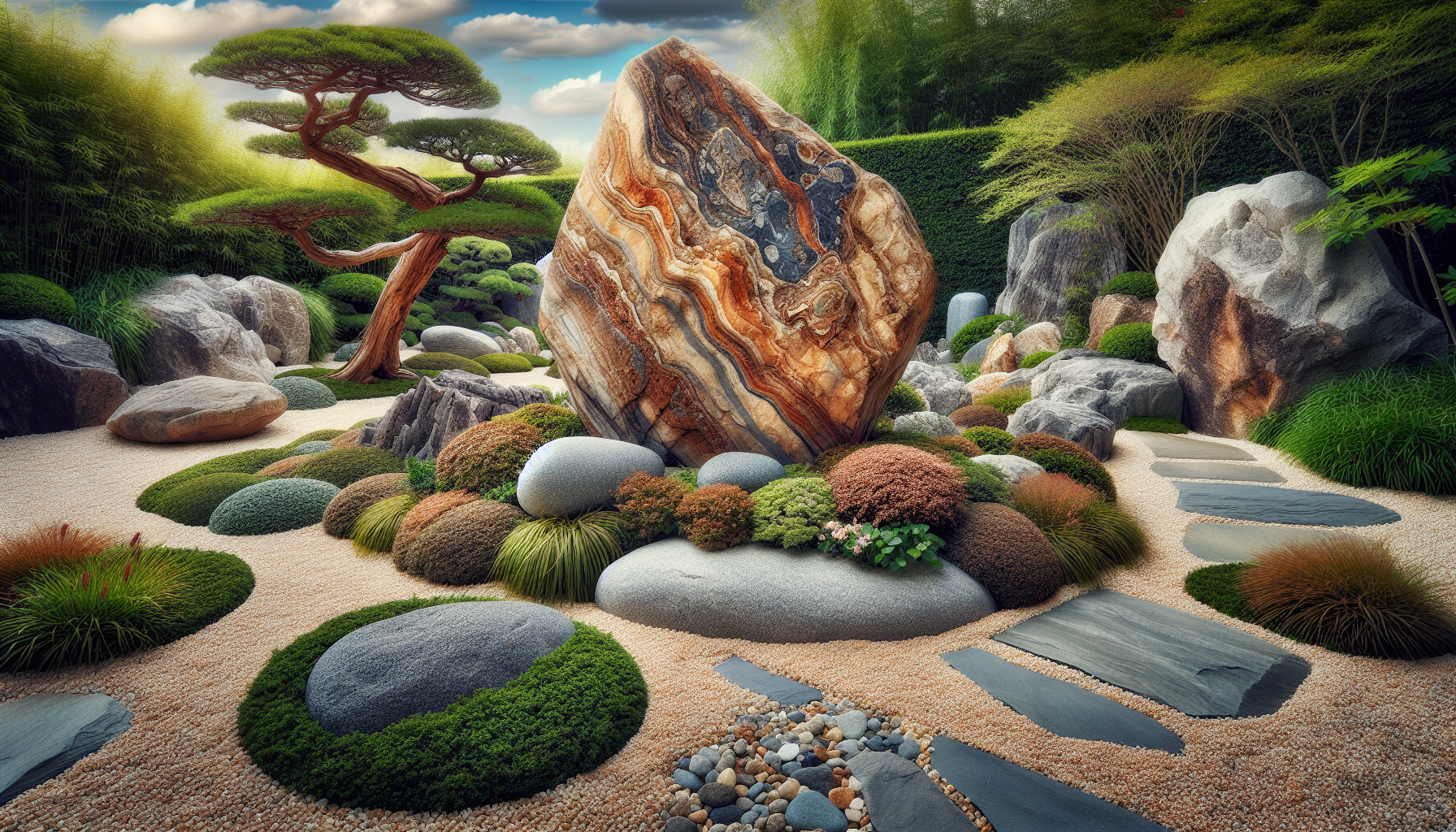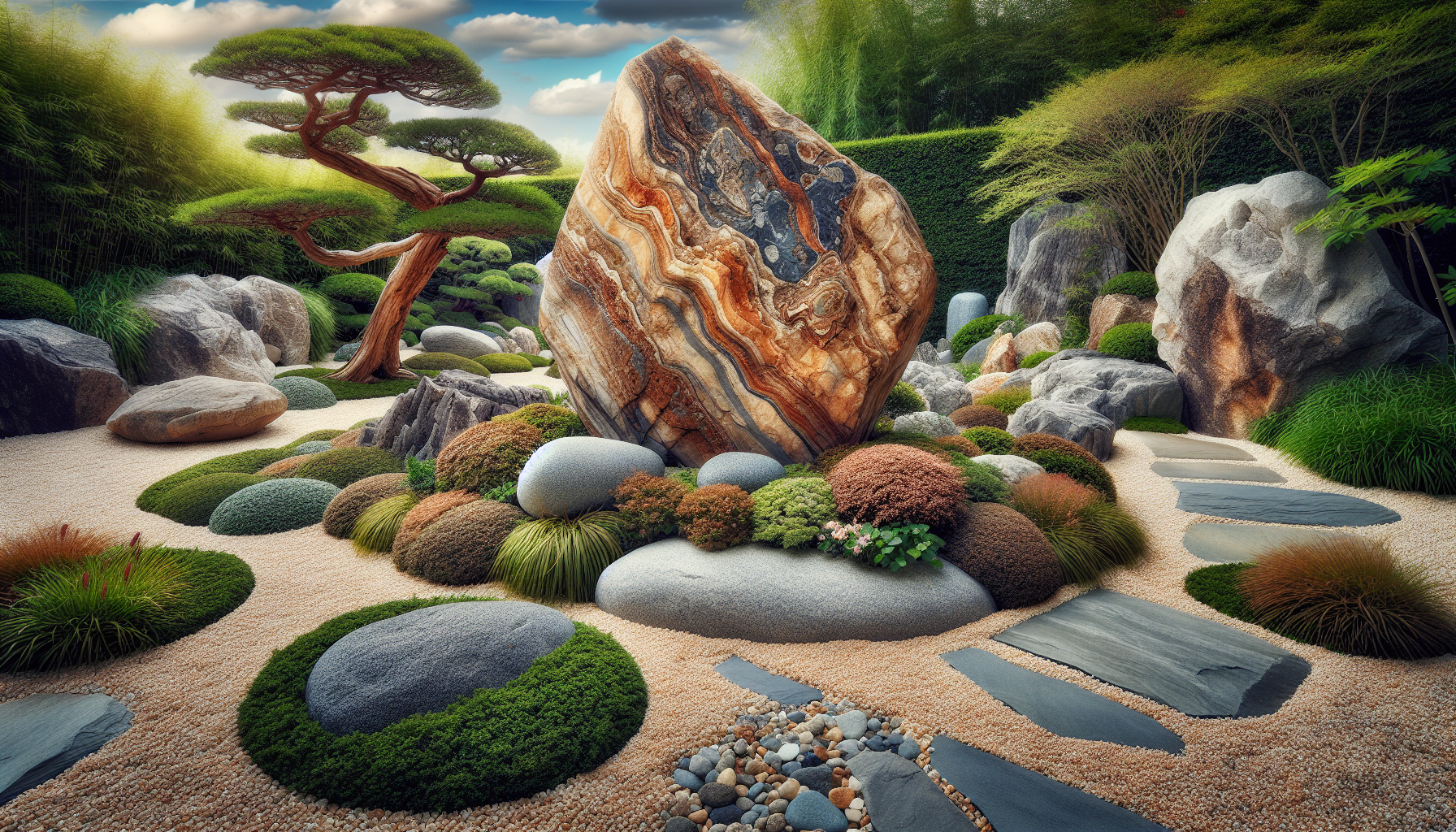Have you ever thought about how boulders can transform a hardscaping project? Using boulders in your outdoor space can add natural beauty and functionality. They help create visually appealing landscapes and serve practical purposes like defining spaces and enhancing drainage.

Understanding Boulder Placement
When it comes to boulder placement, there are several key factors to keep in mind. First, consider the size and shape of your boulders. Mixing different sizes can create an organic look. Placement is crucial, as it affects both aesthetics and functionality.
Choosing the Right Boulder Size
Boulders come in various sizes. You may want some large boulders to anchor your design and smaller ones for decorative touches. Generally, a good mix adds depth and interest.
Tips for Selecting Boulder Size
-
Scale with Your Space: Consider the size of your garden. Large boulders can overwhelm a small area, while small stones might get lost in a large landscape.
-
Theme Consistency: Ensure the boulders you choose match the overall theme of your landscape. For a natural look, go for rounded stones.
-
Accessibility and Safety: Make sure boulders do not obstruct walkways or pathways. Safety is crucial, so avoid placing them in high-traffic areas.
Considering Boulder Shape
Boulders come in different shapes. Some are round, while others are jagged or flat. The shape can influence how they blend into your landscape.
Tips for Boulder Shapes
-
Natural Integration: Use irregular shapes for a more natural look. These boulders often mimic rocks found in nature.
-
Functional Shapes: Flat boulders can work well as seating or stepping stones.
-
Visual Balance: Mix shapes throughout your design for visual interest but keep some consistency.
Planning Your Boulder Placement
Strategic planning is vital for effective boulder placement. This helps you envision how they will fit into the larger scheme of your hardscape.
Evaluating the Landscape
Before placing boulders, observe your existing landscape. Take note of natural slopes, existing plants, and other features.
Steps for Landscape Evaluation
-
Identify Viewpoints: Consider where you will view the boulders from most frequently.
-
Assess Sunlight and Shade: Determine how sunlight and shade will affect the area.
-
Consider Drainage Patterns: Look for areas prone to water pooling and plan your boulders accordingly.
Creating a Layout Plan
A layout plan can help visualize boulder placement. It can guide you to see how different pieces fit into your design.
Steps for Creating a Layout Plan
-
Sketch the Area: Draw a rough layout of your space, marking where you want to place boulders.
-
Use Flags or Paint: If you prefer a more hands-on approach, use flags or spray paint to mark potential boulder locations.
-
Step Back for Perspective: After marking, step back and see how it looks from different angles.
Techniques for Boulder Placement
With your plan in hand, it’s time to place those boulders. The right techniques will help you achieve a professional look.
Setting the Foundation
A solid foundation is essential for boulders. Poor placement can lead to shifting or instability over time.
Tips for Creating a Strong Foundation
-
Clear the Area: Remove sod and debris from the boulder site to create a stable base.
-
Level the Ground: Use a shovel to level out the area. An uneven surface can affect the boulder’s stability.
-
Add Base Material: Consider adding gravel or sand for drainage and to help stabilize the boulder.
Lifting and Moving Boulders
You might find some boulders heavy to lift. Using proper techniques can make this task easier.
Techniques for Moving Boulders
-
Use a Sled or Tarp: Slide the boulder on a sled or tarp to relocate it with less effort.
-
Leverage Tools: Consider using a pry bar to lift the boulder slightly, allowing you to reposition or shift it easily.
-
Get Help: For particularly large boulders, consider asking friends or using machinery.
Arranging Boulders
Once positioned, you can arrange the boulders in a way that enhances your landscape.
Tips for Arranging Boulders
-
Natural Clusters: Group boulders in clusters for a more natural appearance, as rocks frequently occur in nature together.
-
Vary Heights: Place larger boulders in back and smaller ones in front to create depth.
-
Integrate Plants: Include plants around the boulders to soften edges and create a more cohesive look.
Benefits of Boulder Placement
Incorporating boulders in hardscaping provides numerous advantages. They enhance both the visual appeal and functionality of your outdoor space.
Enhancing Aesthetics
Boulders can serve as focal points or accents in your landscape. They draw the eye and create interest in otherwise flat areas.
Tips for Enhancing Aesthetic Appeal
-
Complement Existing Features: Use boulders to highlight existing plants or structures.
-
Create Pathways: Integrate boulders into walkways or paths to provide direction and guidance.
-
Incorporate Water Features: If you have or plan a water feature, boulders can frame it beautifully.
Improving Landscape Functionality
Boulders serve practical purposes beyond aesthetics. Their placement can improve drainage and soil stability.
Tips for Improving Functionality
-
Direct Water Flow: Use boulders to direct water away from your home or other structures.
-
Erosion Control: Strategically place boulders on slopes to help control soil erosion.
-
Defining Spaces: Use boulders to delineate different areas, such as gardens or seating areas.

Maintenance Considerations for Boulders
Boulders are relatively low maintenance compared to plants. However, some care can help maintain their appearance.
Cleaning Boulders
Occasionally, dirt and debris can accumulate on boulders. Regular cleaning can keep them looking fresh.
Tips for Cleaning Boulders
-
Use a Brush: A stiff brush can help remove dirt without causing damage.
-
Spray with Water: A garden hose can help wash away built-up dirt.
-
Avoid Harsh Chemicals: Opt for natural cleaning solutions that won’t harm surrounding plants.
Inspecting Boulder Stability
Pay attention to any shifting or instability with your boulders. Regular checks can help catch potential issues early.
Tips for Inspecting Boulders
-
Check for Movement: Ensure boulders remain stable and don’t rock or shift.
-
Look for Cracks: Inspect boulders for any signs of cracks or wear.
-
Reinforce if Necessary: If a boulder shifts, consider reinforcing the base with gravel or sand.
Conclusion
Boulder placement is a fantastic way to enhance your hardscape, offering both beauty and function. By selecting the right sizes and shapes, planning thoughtfully, and using proper placement techniques, you can create a stunning outdoor space that reflects your style.
Should you wish to take your hardscaping to the next level, consider reaching out to Xclusive Home Services. They can guide you with expert advice and services tailored for your needs.
Xclusive Home Services
14505 N. Hayden Rd., Ste. 101
Scottsdale, AZ 85260
Phone: (602) 341-5545
Email: management@xclusivehomeservicesco.com
Founded in 2025, Xclusive Home Services is your go-to solution for hardscaping and other home services. They can help you achieve the landscape of your dreams!

